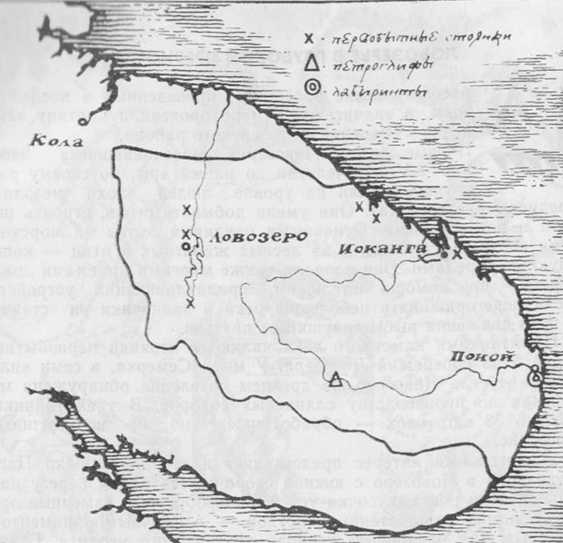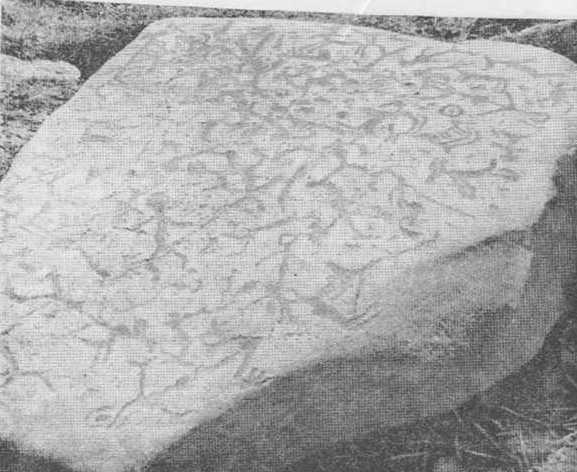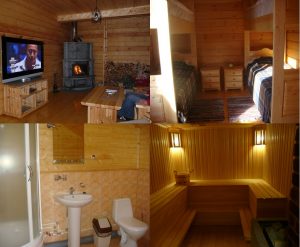The Lovozero region occupies about a third of the Kola Peninsula. On its territory, such European states as Austria or the Czech Republic could easily fit. Lovozersky district is the main residence of the Saami (Lapps) in Russia.
The area got its name after the large, beautiful lake Lovozero and the Sami village Luyavr-siyt built near it (in Russian – “Lovozero churchyard”).
The Lovozero region is entirely located beyond the Arctic Circle, between the Barents and White Seas. In the north of it stretches tundra with low shrubs, swamps and hills, in the middle part – forest tundra, and in the south – the so-called “northern taiga”. Here flows the Ponoy River, 426 kilometers long, with numerous tributaries, usually shallow and rapids. Forests and hills with good reindeer moss alternate with swampy lowlands, heaps of stones and sparse vegetation.
A bit of history.
The Lovozero region is unsuitable for agriculture due to climatic and soil conditions, and since ancient times the population of this region has been engaged in crafts, mainly fishing and hunting.
Due to the harsh natural conditions, the population of the region in the past numbered several hundred people. They were almost exclusively Saami. At the end of the 16th – beginning of the 17th century, several Russian families settled near the mouth of the Ponoy River. And then Komi and Nenets came to the center of the Kola Peninsula from the banks of the Pechora and Izhma.
Archaeological excavations carried out in recent years have largely clarified the picture of the settlement and development of the Lovozero region.
 The first inhabitants of Lovozero, who settled here in the 6th-5th millennium BC, were at the level of people of the Mesolithic (Middle Stone Age) in their development. They knew how to make fire, build huts and semi-dugouts. The main tools for hunting sea animals were harpoons, and for forest animals and birds – spears and bows with arrows. They also mastered many methods of catching animals – with the help of loops, pits, pressing down devices; they knew how to block small rivers and creeks and put rod traps in the way of fish.
The first inhabitants of Lovozero, who settled here in the 6th-5th millennium BC, were at the level of people of the Mesolithic (Middle Stone Age) in their development. They knew how to make fire, build huts and semi-dugouts. The main tools for hunting sea animals were harpoons, and for forest animals and birds – spears and bows with arrows. They also mastered many methods of catching animals – with the help of loops, pits, pressing down devices; they knew how to block small rivers and creeks and put rod traps in the way of fish.
Monuments of the Stone Age are the sites of primitive people near the coast of Lovozero. Near Cape Semerka, seven kilometers from the village of Lovozero, a workshop for the production of slate axes was discovered in an ancient settlement. In three caches, 38 blanks were found – processed, but not subjected to polishing.
The site near the Tsagi River, which flows into Lovozero from the south, is also of considerable interest. On the left bank, the remains of a hearth, pieces of coal, various stone tools, fragments of thick-walled vessels with a pit ornament, typical of the initial period of the Arctic Neolithic, were found. The clay from which the vessels are made contains an admixture of sand. Analysis of charcoal by radiocarbon method showed the age of the site to be 5760 years (with a possible error of ±160 years). Thus, the settlement dates back to the beginning of the 4th millennium BC. The site on the right bank of the Tsagi River is later. Here, the vessels are thin-walled, clay with an admixture of asbestos, and the ornament is made of traced parallel strips.
At the ancient sites of the Lovozero region, evidence of the existence of a bronze foundry was found here – several copper and bronze plates, lyachki (clay scoops for pouring bronze into molds), fragments of foundry molds, copper slags (glassy waste from metal smelting).
An important discovery was the discovery at the site near Cape Semerka, in another excavation, of the remains of an iron-smelting furnace and a layer of iron slag. Obviously, already in the 2nd millennium BC, the inhabitants of Lovozero reached a fairly high level of development, they were familiar with the complex process of metal smelting.
The population of the Kola Peninsula maintained ties with the tribes of the Southern and North-Eastern White Sea, receiving from there flint for the manufacture of arrowheads and darts, small cutting tools (knife-shaped plates, cutters, piercings). Some of the flint products are of Scandinavian origin. An amber pendant was found at a site near Lovozero, testifying to connections with the Baltic region.
This area, as it turned out, was used by primitive people for hunting for several millennia. Here it was possible to trace the course of development of the economy and spiritual culture of primitive people. Wandering hunting and gathering of seafood were replaced by more productive forms of economy, a different way of life: long-term settlements appeared, hunting with a dog and improved weapons, fishing with nets, and most importantly, a highly productive marine fishery arose.
The main objects of hunting, judging by the bone remains, were the harp seal and the seal. In addition, bones of elk, deer, polar and brown bears, arctic fox, wolverine, various birds and fish are found in large numbers in habitats, and less often bones of walrus, beluga whale, narwhal, and wolf. An extensive set of tools and household items. Among the finds are many bone products, including those made from deer and elk antlers, walrus tusks: harpoons, arrowheads and spears, long daggers, knives, awls, fishhooks, needles for knitting nets, needle cases and the finest needles for sewing, a comb , spoon. In addition to bone, there are many items made of high-quality quartz, slate, and, to a lesser extent, rock crystal and flint. These are axes, adzes, arrowheads and darts, cranked knives, scrapers, a lamp (a vessel with a handle, into which fat was put and a wick was inserted). There are fragments of pottery. Among the most interesting finds is a mold for casting small bronze hatchets, made of soapstone, a material that is malleable in processing.
The found objects of primitive art are of great value – magnificent figurines of various animals, mainly elk, bear and deer.
Images of people are rare, and they are carved not in the form of individual figures, but as parts of products – male heads at the ends of two bone knives and at the end of one rounded rod. It is possible that these objects were used in cult ceremonies.
 In 1973, the scientific world was excited by the discovery of petroglyphs in the Lovozero region – drawings carved on stones. They were discovered by an archaeological expedition in the middle reaches of the Ponoy River. Here, apparently, primitive people set up ambushes and beat animals afloat or when they went ashore, and after a successful hunt, they celebrated festivities with ritual actions. Perhaps there was a sanctuary here. In total, six stones were found in this place, on which about a hundred drawings were carved with a quartz chisel. Deer and people are depicted almost exclusively. The height of the figurines is 10-15 centimeters, the depth of the embossment is up to 3 millimeters. Animals are depicted in profile, people in front. The embossing is solid everywhere, not contour. The petroglyphs of Ponoi were created over a long period of time – from the end of the 2nd millennium BC to the first centuries of our era.
In 1973, the scientific world was excited by the discovery of petroglyphs in the Lovozero region – drawings carved on stones. They were discovered by an archaeological expedition in the middle reaches of the Ponoy River. Here, apparently, primitive people set up ambushes and beat animals afloat or when they went ashore, and after a successful hunt, they celebrated festivities with ritual actions. Perhaps there was a sanctuary here. In total, six stones were found in this place, on which about a hundred drawings were carved with a quartz chisel. Deer and people are depicted almost exclusively. The height of the figurines is 10-15 centimeters, the depth of the embossment is up to 3 millimeters. Animals are depicted in profile, people in front. The embossing is solid everywhere, not contour. The petroglyphs of Ponoi were created over a long period of time – from the end of the 2nd millennium BC to the first centuries of our era.
They are not the same in the manner of execution: the later ones are somewhat schematic, but much more perfect, more diverse in subject matter. On one of the stones, the surface of which barely exceeds 4 square meters, more than 60 drawings were made. They belong to the early metal era. The scenes of a round dance and the birth of a deer are remarkable. Experts note the artistic merit of the drawings. They are original and often talented.


